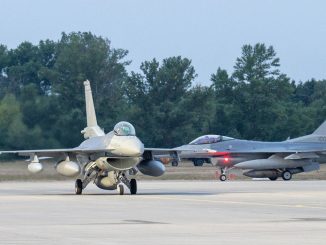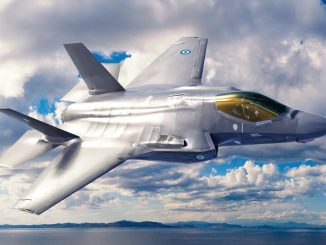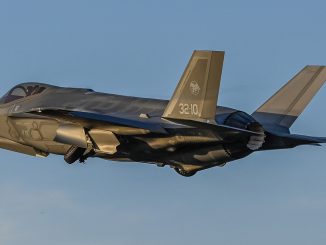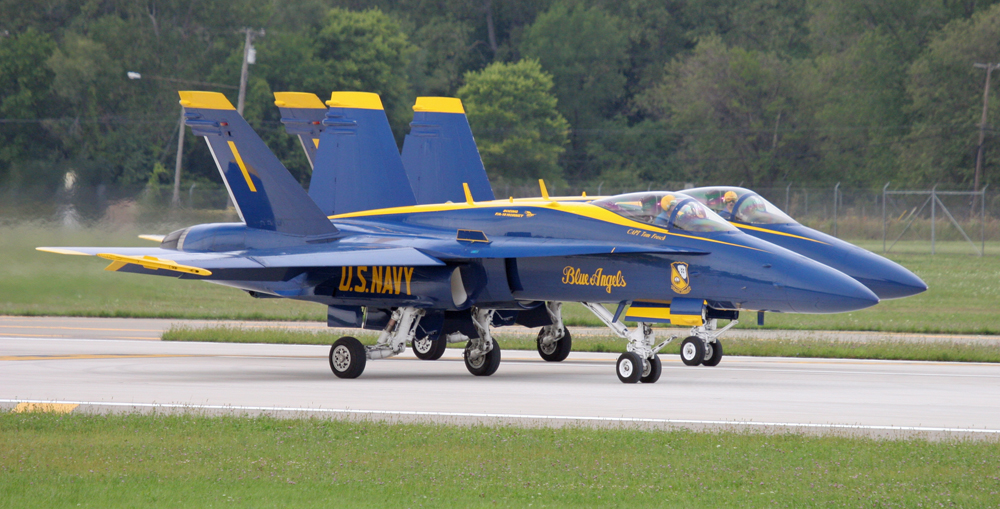
U.S. Navy Blue Angels Train for Upcoming 2017 Show Season: Integrate New Members
One of the world’s oldest and most famous flight demonstration teams, the U.S. Navy Blue Angels, are preparing for a busy airshow flight demonstration season in 2017 at their winter practice airfield at Naval Air Station El Centro, California.
The Blue Angels were formed in 1946 following WWII as a public relations and recruiting tool to inspire airshow crowds to pursue excellence in all of their endeavors and as a recruiting asset to attract potential candidates to join the U.S. Navy. They are the second oldest flight demonstration team in the world behind the French team Patrouille de France that began flying demonstrations in 1931.
The Blue Angels are largely responsible for the format of the modern airshow with a large demonstration team headlining a supporting cast of aerial demonstrations and on-the-ground static displays of aircraft. Their shows have helped create a culture of airshow fans, aviation enthusiasts and aircraft spotters as well as being a recruiting asset.
For the upcoming 2017 flight demonstration season the Blue Angels will perform at an impressive 35 airshows including one flyover for the U.S. Naval Academy graduation at Annapolis, Maryland and one show weekend still to be determined. Their schedule includes approximately 64 total flight demonstrations, usually at least two per weekend in addition to practices and public appearances.

The Blue Angels fly an older version of the Boeing F/A-18 Hornet. They are scheduled to move to the newer Super Hornet in 2018. Their current F/A-18’s are legacy aircraft, among the oldest flying. They are modified for airshow performances with a second jet fuel pump mounted upside down in the aircraft for extended flying inverted in formation and during solo maneuvers. A normally equipped FA-18 Hornet could not maintain inverted flight as long as the modified Blue Angels’ aircraft.
The team’s trademark high-gloss dark blue and gold paint reduces aerodynamic drag since it has lower friction than the matt low-visibility paint schemes used in combat aircraft. This gloss paint produces better performance, especially at low altitude. The high contrast graphics on the aircraft are arranged to improve visibility in all-weather conditions for spectators and photographers and to enable people to tell the bottom of the aircraft from the top easily during rolling maneuvers.
The demonstration aircraft carry no armament. Their cannons have been removed and replaced with a reservoir containing bio-degradable paraffin fluid that is released into the aircraft’s exhaust plume to produce the smoke trail you see behind the aircraft. The smoke is not only important to enable spectators to follow the aircraft during an airshow, it also allows the pilots to see each other during re-joining maneuvers when the two solo aircraft rejoin the four aircraft diamond formation toward the end of their flight demonstration routine.
Flight controls on the Blue Angels’ F/A-18’s have been modified to make formation and inverted flight easier. The flight control stick between the pilots’ legs uses a spring to exert 40-pounds of forward bias force meaning the pilot constantly exerts slight rearward pressure compared to a normal Hornet to maintain level flight. While this unusual modification makes the aircraft physically more work to keep in a level flight attitude it makes the flight controls feel more “positive” throughout the control envelope.
Finally, unlike the U.S. Air Force Thunderbirds, the Blue Angels do not wear G-suits in their cockpits. The pilots are conditioned to perform the “AGSM” or anti-G straining maneuver to resist g-forces during high performance maneuvers such as the maximum performance turn performed at low altitude.
Video and photos of the Blue Angels latest practice sessions at NAS El Centro provide a fascinating insight into the team’s preparation for the 2017 show season.
The early season practices are sometimes being flown with a unique configuration of Blue Angels’ aircraft, different from the show formation. This video shows two of the two-seat F/A-18D aircraft both carrying the #7 Opposing Solo aircraft markings.
During an operational show the #7 Opposing Solo markings are worn by a single- seat F/A-18C. The appearance of two #7’s during rehearsal may be due to maintenance availability of the aircraft or for training reasons.
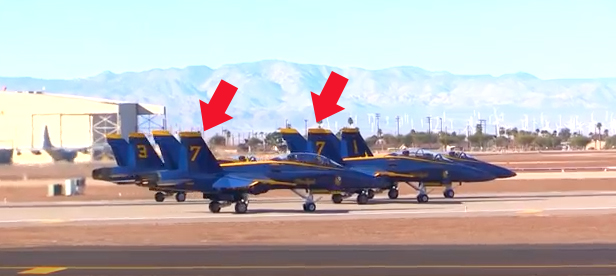
Another interesting insight with the practice sessions is the somewhat greater interval between aircraft flying formation during the pre-season. The incredibly close overlapping diamond formation is a spectacular trademark of the Blue Angels. Presumably demonstration pilots begin show practice at slightly wider flying intervals to familiarize themselves with the visual cues needed to maintain close demonstration formation flying.
In mid-July 2016 The Blue Angels announced the addition of several new members to the team. Three of the new team members are demonstration pilots. The new Blue Angel demo pilots are:
Navy Lt. Brandon Hempler, 32, of Wamego, Kansas.
Lt. Hempler is an F/A-18 Super Hornet pilot formerly assigned to Training Squadron (VT) 22, the “Golden Eagles,” at NAS Kingsville, Texas. He is a 2007 graduate of Kansas State University, Salina, Kansas.
Navy Lt. Damon Kroes, 34, of Fremont, California.
Lt. Kroes is an F/A-18 Hornet instructor pilot formerly assigned to Marine Fighter Attack Training Squadron (VMFAT) 101, the “Sharpshooters,” at Marine Corps Air Station Miramar, California. He is a 2006 graduate of San Diego State University, San Diego.
Navy Lt. Nate Scott, 31, of Danville, California.
Lt. Scott is an F/A-18 Hornet instructor pilot currently assigned to Strike Fighter Squadron (VFA) 106, the “Gladiators,” at NAS Oceana, Virginia. He is a 2007 graduate of the University of Southern California, Los Angeles.
The integration of these new members into the team continues into the 2017 season. Navy Lt. Lance Benson, 33, of McPherson, Kansas; Navy Lt. Tyler Davies, 34, of Kennesaw, Georgia and Navy Cmdr. Frank Weisser, 38, of Atlanta, Georgia continue as Blue Angel demonstration pilots for 2017 from the 2016 season.
The Blue Angels 2016 season was marred early on when Capt. Jeff Kuss of Durango, Colorado, Blue Angel #6, Opposing Solo, died in an accident on June 2, 2016 in Smyrna, Tennessee during Friday airshow practice. He had been a member of the team since September 2014 and had over 1400 flight hours and 175 arrested landings on an aircraft carrier. The accident occurred during a low-altitude “Split S” maneuver that was subsequently removed from the Blue Angels flight demonstration routine. The maneuver may return for the 2017 season pending review.
For information about Blue Angel flight demonstrations, their locations and dates please visit: https://www.blueangels.navy.mil








